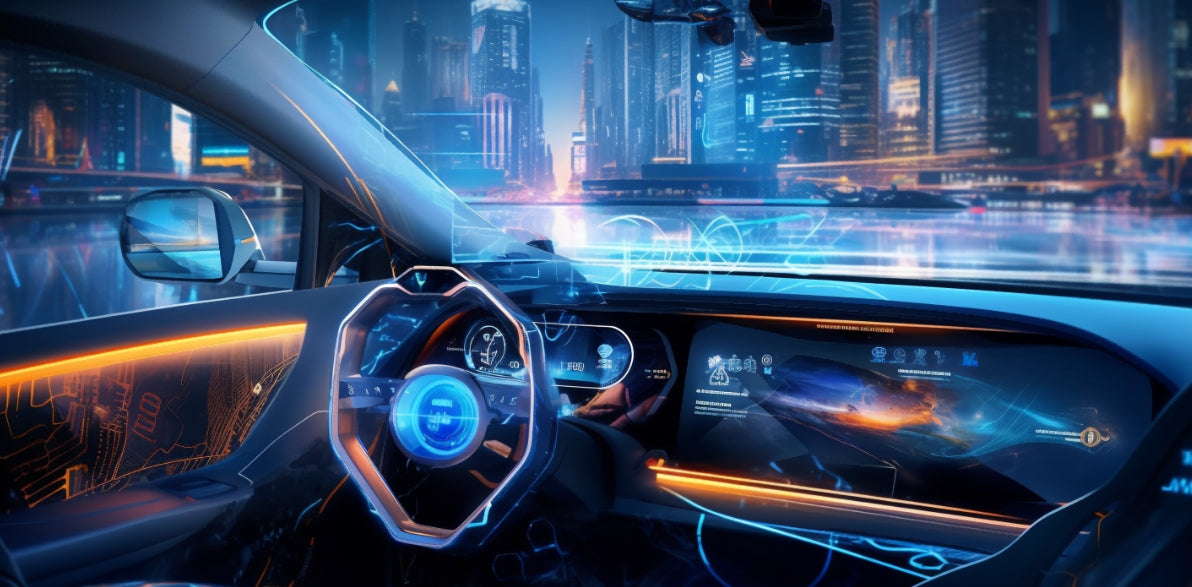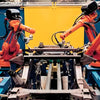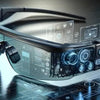TOF Technology Enhances Autonomous Driving with Precise 3D Sensing

With the rapid advancement of autonomous driving technology, achieving comprehensive perception, precise decision-making, and safe control has become the industry's central focus. At the perception layer, LiDAR (Light Detection and Ranging), cameras, and TOF (Time-of-Flight) sensors form a multi-sensor fusion framework. Particularly, TOF technology is gaining traction due to its high accuracy, low latency, and strong interference resistance, accelerating its deployment in close-range perception and edge intelligence applications within autonomous vehicles.
Multi-Sensor Fusion: The Synergy of TOF + LiDAR + Cameras
Current mainstream autonomous driving perception systems employ a fusion of LiDAR, cameras, and millimeter-wave radar to achieve multi-dimensional, all-round environmental sensing. As an emerging 3D imaging technology, TOF sensors are increasingly integrated into the perception layer, especially excelling in short-range environment modeling and dynamic scene recognition.
Roles and Advantages of Each Sensor
-
LiDAR: Generates high-density, high-precision point clouds to accurately reconstruct the surrounding 3D environment, suitable for mid-to-long-range object detection and road topology mapping. It is a core component for advanced autonomous driving spatial perception.
-
Cameras: Rely on image recognition algorithms to identify vehicles, pedestrians, lane markings, traffic signs, and signals, providing rich semantic information. Cameras are cost-effective but can suffer from instability under strong light or low-light conditions.
-
TOF Sensors (3D TOF Cameras): Based on time-of-flight ranging, these sensors emit modulated light and measure the reflected echo time to achieve real-time, high-precision distance measurements. Compared to LiDAR and traditional cameras, TOF excels in short-range 3D perception, dynamic target identification, and filling visual blind spots, significantly enhancing near-field environment modeling.
Advantages of TOF + RGBD Fusion Solutions
By combining depth maps with color images, advanced RGBD vision systems (such as TOF combined with RGB cameras) enable:
-
More accurate object segmentation and recognition, improving the stability of dynamic target tracking like pedestrians and cyclists;
-
Natural human body contour modeling, suitable for occupant detection, fatigue monitoring, and intelligent in-cabin gesture interaction;
-
Enhanced robustness and fault tolerance, maintaining high-quality perception even in backlight, nighttime, or degraded visual conditions;
-
Centimeter-level obstacle avoidance in close-range low-speed scenarios (e.g., parking garages, urban low-speed driving), significantly improving safety.
Future Outlook: The Core Role of TOF in Intelligent Perception
With the continuous advancement of automotive AI chip computing power, multi-sensor fusion architectures will become increasingly intelligent. TOF sensors, due to their small size, low power consumption, and fast response, will become key components in vehicle interior and exterior integrated perception systems, widely applied in L4/L5 autonomous driving, smart cockpits, and human-machine interaction.
What is a 3D TOF Camera?
3D TOF (Time-of-Flight) cameras capture three-dimensional spatial information by measuring the time it takes for emitted light to travel to an object and back to the sensor. The core technology involves emitting modulated infrared or laser pulses and calculating distances based on light flight time, producing high-precision depth maps and 3D images.
Key Features:
-
Real-time 3D data acquisition: Each pixel contains depth information, unlike traditional 2D cameras;
-
High precision and fast response: Suitable for dynamic scene depth perception;
-
Strong resistance to ambient light interference: Capable of working under low or no light conditions;
-
Wide applications: Facial recognition, gesture recognition, autonomous driving, robot navigation, AR/VR, and medical devices.
Significant Advantages of TOF Technology in Close-Range, Low-Speed Scenarios
In congested urban streets, automated parking, lane changing, and complex low-speed environments, real-time and accurate environmental perception is critical. Compared to traditional cameras and ultrasonic sensors, TOF offers high-resolution depth perception and strong interference resistance, demonstrating outstanding adaptability and practical value in complex near-field environments.
-
Automated Parking: Traditional ultrasonic sensors are susceptible to metal reflections and narrow spaces, causing misjudgments. TOF cameras enable real-time, high-precision 3D distance measurement, ensuring safer and more accurate path planning even in dim or complex lighting conditions.
-
Lane Change Assistance: Side-mounted TOF sensors provide high-frequency 3D monitoring of blind spots, offering rapid refresh rates and low latency to promptly detect vehicles and pedestrians, ensuring safe lane changes.
-
In-Cabin Gesture Recognition and Human-Machine Interaction (HMI): Within smart cockpits, 3D TOF cameras support contactless gesture recognition, allowing drivers to control air conditioning, volume, navigation, and more through natural hand movements, enhancing comfort and intelligence.
TOF systems do not rely on ambient light and resist structured light interference, maintaining stable depth data output under varying lighting conditions. Their compact size, low power consumption, and high efficiency make them the preferred choice for next-generation intelligent driver assistance and in-cabin perception systems.
Advantages of TOF Sensors over Ultrasonic Sensors
| Aspect | Ultrasonic Sensors | TOF Sensors |
|---|---|---|
| Distance Accuracy | Lower, typically centimeter-level | Millimeter-level precise ranging |
| Response Speed | Higher latency, low refresh rate | High refresh rate, real-time responsiveness |
| Environmental Adaptability | Susceptible to rain, wind, noise interference | Strong interference resistance, effective under strong/weak light |
| Imaging Capability | No imaging, obstacle detection only | Supports 3D modeling and depth image fusion |
Therefore, more 3D perception systems are replacing some ultrasonic sensors with TOF, enabling hardware-software co-evolution.
Typical Applications: Automated Parking, Blind Spot Detection, In-Cabin Gesture Control
With automotive intelligence upgrades, TOF technology is widely adopted in mass-production vehicles. Its high precision, fast response, and strong light interference resistance provide reliable 3D environmental data support for intelligent driving, especially in:
-
Automated Parking Assistance (APA): Combined with visual SLAM and surround cameras, enabling high-precision static and dynamic obstacle mapping and localization for centimeter-level parking accuracy, especially in nighttime and tight spaces.
-
Blind Spot Detection (BSD): Side-mounted TOF sensors scan blind spots at high frequency; once a risk target is detected, they trigger audible/visual warnings, steering wheel vibrations, or automatic braking for proactive safety, with faster response and intuitive 3D contour information.
-
Gesture-Controlled Human-Machine Interfaces (HMI): In-cabin TOF enables precise gesture recognition without wearable devices, naturally controlling multimedia, climate, sunroof, and more to enhance user interaction.
-
Driver Monitoring Systems (DMS): Using TOF depth recognition to track head pose, eye closure, and gaze direction in real-time, detecting fatigue or distraction risks much more reliably than traditional 2D cameras, ensuring driving safety.
Synergy with V2X Communication: Building a Full-Stack Vehicle Perception System
As intelligent transportation and autonomous driving develop, single sensors struggle to meet complex environment safety demands. As a high-precision, short-range 3D sensing device, TOF sensors deeply integrate with V2X (Vehicle-to-Everything) communication technology to elevate vehicle perception to higher dimensions and broader coverage.
-
Real-time sharing of near-field 3D information: Vehicles equipped with TOF sensors can upload high-precision depth data via V2X protocols, supporting vehicle-to-infrastructure cooperation and enhancing environment perception completeness and predictive capability.
-
Roadside Unit (RSU) sensing and forwarding: Roadside TOF devices scan key areas and sync data via V2X to passing vehicles, extending perception range and providing early warnings of obstacles and traffic abnormalities.
-
Multi-modal localization fusion: TOF data combined with visual SLAM and laser navigation constructs a visual + LiDAR + depth multi-modal fusion localization framework, improving map construction and localization accuracy in complex scenarios.
-
Supporting L4 autonomous driving deployment: The integration of TOF and V2X significantly enhances environmental understanding and dynamic response capabilities in urban, port, and campus scenarios, accelerating high-level autonomous driving commercialization.
By deeply integrating TOF sensors, high-definition maps, fast V2X communication, and intelligent decision systems, a comprehensive intelligent transportation ecosystem is built—from micro-perception to macro-scheduling—enabling multi-vehicle and multi-road coordinated interaction and advancing future green smart traffic networks.
Conclusion: TOF Technology Powers the Future of Autonomous Driving
With continuous breakthroughs in 3D TOF cameras, DTOF, RGB-D vision, and visual SLAM, TOF is becoming a key capability for near-field intelligent perception and high-precision interaction. Its fusion with LiDAR, cameras, and V2X communication will drive autonomous driving from mere perception to cognition, achieving a leap from “rule-driven” to “world-understanding.”
TOF is not just a distance measurement tool but a cornerstone of the intelligent mobility ecosystem. In the future, whether in passenger vehicles, AGV material handling, or interior/exterior vehicle environments, TOF technology will play an increasingly vital role, boosting safety and comfort in smart driving experiences.
OS1 32/64 /128 lines for autonomous delivery Autonomous driving 3D lidar Ouster Mid-Range High-Resolution Imaging Lidar
After-sales Support:
Our professional technical team specializing in 3D camera ranging is ready to assist you at any time. Whether you encounter any issues with your TOF camera after purchase or need clarification on TOF technology, feel free to contact us anytime. We are committed to providing high-quality technical after-sales service and user experience, ensuring your peace of mind in both shopping and using our products.








